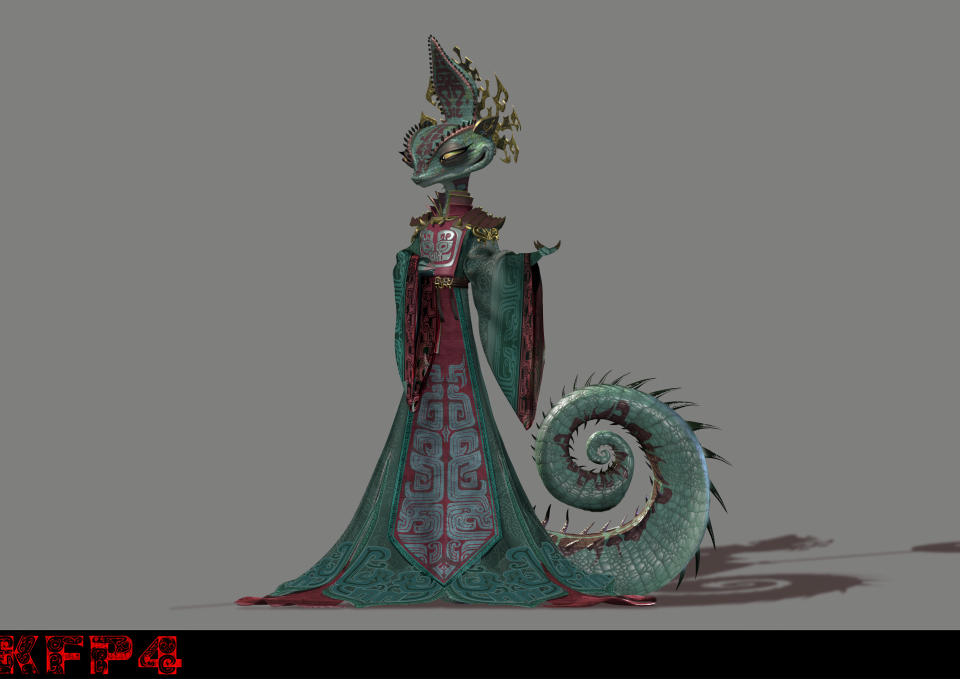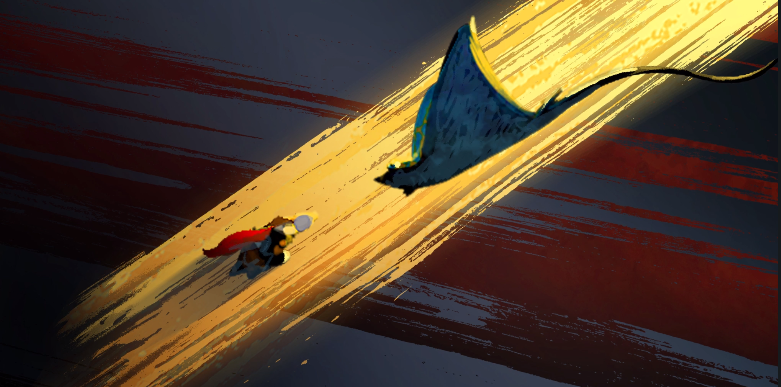The Viola Davis-Voiced Chameleon Required a Record-Breaking 8,130 Animation Controls in ‘Kung Fu Panda 4’

“Kung Fu Panda 4” is all about change, which makes sense given the eight-year gap in DreamWorks Animation’s nearly $2 billion comedy-adventure franchise. In the latest sequel, Jack Black’s endearing martial arts panda-turned-Dragon Warrior, Po, assumes the role of spiritual leader and guides Awkwafina’s thieving gray Corsac fox, Zhen, to be his successor. However, he must battle Viola Davis’ The Chameleon, a shapeshifting sorceress lizard and crime lord who copies the kung fu moves of other masters.
Director Mike Mitchell, who came to “Kung Fu Panda” from “Shrek” and “Trolls” (although he contributed to the franchise), wanted to lean into the spirit of the first film while drawing parallels between Po and The Chameleon. “Whenever I work on a franchise, I always go back to that first movie,” he told IndieWire. “That’s my favorite one, and the thing that I loved about Po is he is so underestimated. Everyone, even his friends, his own father, underestimated him.
More from IndieWire
2024 Oscar Nominations: 'Oppenheimer' and 'Poor Things' Lead This Year's Picks
'Azrael' Review: Samara Weaving Silently Runs for Her Life in a Feature-Length Chase Sequence
“And our villain mirrors that where she is underestimated,” Mitchell continued. “She’s just a small lizard, a little chameleon, and like Po, wants to challenge and kick butt. And everyone discounted her, and it burned her and she went darker to wanting revenge, which is a great motivator to get what you want. So she put all her energy into sorcery.”
The Chameleon’s elegant and colorful design, worked out by lead character designer Euni Cho, makes use of well-researched physiology and movement. However, she’s powered by the most elaborate character rig in DreamWorks history, totaling 8,130 controls for detailed transformations. The previous record was Toothless from “How to Train Your Dragon” with 5,000 controls.

These controls were affected by hundreds of spikes on her body and all of the panels on her dresses. Everything had to be animatable. As a result, the design was adjusted to seamlessly absorb into her skin (which involved a new paintbrush tool for adding scales). “When she transforms into a snow leopard, for example, she’s not furry,” Mitchell added. “It’s like a snow leopard that retains her creepy lizard skin.”
But the director wanted jarring transformations displayed during The Chameleon’s extraordinary kung fu fighting. “I almost wanted it to be painful, like a horror film,” he said,” because she’s such an elegant character and she’s so sure of herself, that I thought it would be creepier, almost like bones breaking, but it got a little too much.”
Sean Sexton (“How to Train Your Dragon: The Hidden World”), head of character animation, relied on initial 2D animation explorations to determine how The Chameleon would transform into the other creatures. This resulted, for instance, in a magical wind that would come up from her dress. “She changes or morphs like some of those old music videos from the ’90s,” Sexton told IndieWire.
The first character transformation they attempted for the tiny chameleon was a 25-foot elephant, and that became the baseline for scaling up. This became a major collaboration between the character and VFX departments to learn how to stretch the skin without breaking the surface.

The Chameleon’s accumulation of power as a result of her magical transformations leads to the inevitable battle with Po, whom she underestimates (of course). For this, Mitchell was inspired by the climactic wizards’ duel from Disney’s animated “The Sword and the Stone.” I’ve always been a big fan of Madame Mim and Merlin,” Mitchell said. “I just thought it was one of the greatest fight sequences of all time because the transformations were so fun and joyful and surprising to watch. And so, if we could get a taste of how surprising each of these transformations are with The Chameleon, that would be so great. That was our North Star as we moved forward.”
The battle was bolstered by lots of split screens, GoPro-like camera movement, and 2D-inspired graphic outlines and silhouettes for transformation poses. However, the greatest inspiration was streaks of paint strokes from production designer Paul Duncan. “I remember talking to Mike early on about anime lines and if he wanted to do that,” said Sexton. “He said he would rather do something completely unique to ‘Kung Fu Panda.’ And Paul had these paint strokes that felt like our version of the anime lines for this film. So whenever Po is really empowered, you’ll see anime lines come in the background. And that drops out and becomes these really colorful paint strokes.”
Mitchell said it was a matter of returning to the original look of “Kung Fu Panda.” “Even Tai Lung’s escape was such a beautiful sequence,” he added. “I was always impressed with all that beauty. It’s only advanced and gotten better and better. So we figured that we would take it as far as our new technology would allow. We wanted to be new but, at the same time, not stray too far away from the beautiful work that’s been done previously.”
Best of IndieWire
The 65 Best Sci-Fi Movies of the 21st Century, from 'Melancholia' and 'M3GAN' to 'Asteroid City'
Christopher Nolan Movies, Ranked from 'The Dark Knight' and 'Tenet' to 'Dunkirk' and 'Oppenheimer'
Where to Watch This Week's New Movies, Including 'Argylle' and 'How to Have Sex'
Sign up for Indiewire's Newsletter. For the latest news, follow us on Facebook, Twitter, and Instagram.


